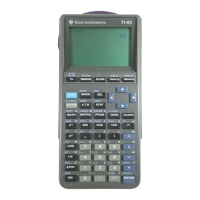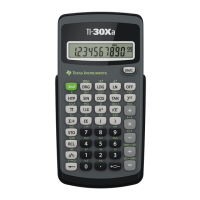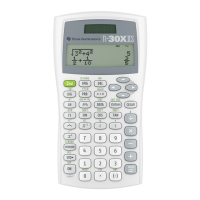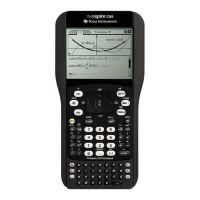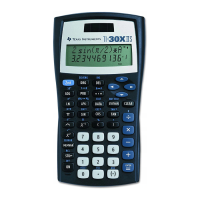linreghk(xl,yl,h,k)
func
©(xlist,ylist,h,k) return {b,a} for y=b*x+a through (h,k)
...
When this program is selected in CATALOG, the status line shows
©(xlist,ylist,h,k) return {b,a} for y=b*x+a through (h,k)
Consider using this feature to give the user all the critical documentation needed to use the function:
1. The input arguments for the function. In my example, the arguments are (xlist,ylist,h,k). I use
parenthesis to indicate that these are the arguments. I use the names xlist and ylist to remind
me that these are lists, and that they are the x- and y-data values for the regression. Note that
the names used in the comment need not be the actual variable names; they can be more
descriptive. Also, the phrase through (h,k) shows that h and k define a point.
2. The function output. In the example I use the phrase returns {b,a} to indicate that the functions
returns two numbers in a list.
3. What the function actually does. The phrase for y=b*x+a shows that the function finds a linear
regression function.
4. Any restrictions on the input variables. My example doesn't need this, but you could add a
phrase like h>0, k>0.
5. The modes in which the function should be run.
It may be difficult to display all this information in the status line, but the dialog box will display 13 lines
of about 30 characters each.
[7.3] Using language localization
This section was written by Lars Fredericksen.
There are basically four problems connected to writing programs/functions which have to run under
language localisation:
1. AMS versions previous to 2.0X do not support language localisation.
2. Programs and functions can only be compiled (tokenised) in the language they were written in.
3. The names of the variable types (getType(var)=”?”) are unknown at the time of programming,
because they are language dependent.
4. The names of the modes are unknown (getMode(“?”)=”?”:SetMode(“?”,”?”) ). There are other
mode related function where the same problem occur, but the handling is principal the same
so I will concentrate on the mentioned functions.
1) In AMS version 2.0X the mode functions support a new syntax: a mode number can replace the
mode name. It is a very important feature, because it provides a way of setting the mode without
knowing the language dependent name. But it does also give problems with calculators running AMS
previous to 2.0X, because they are not compatible with the new syntax. If programs have to run on all
AMS version and under different languages it is necessary to take both models into account.
To test if the AMS supports language localisation can easily be done in a program with this code:
7 - 2

